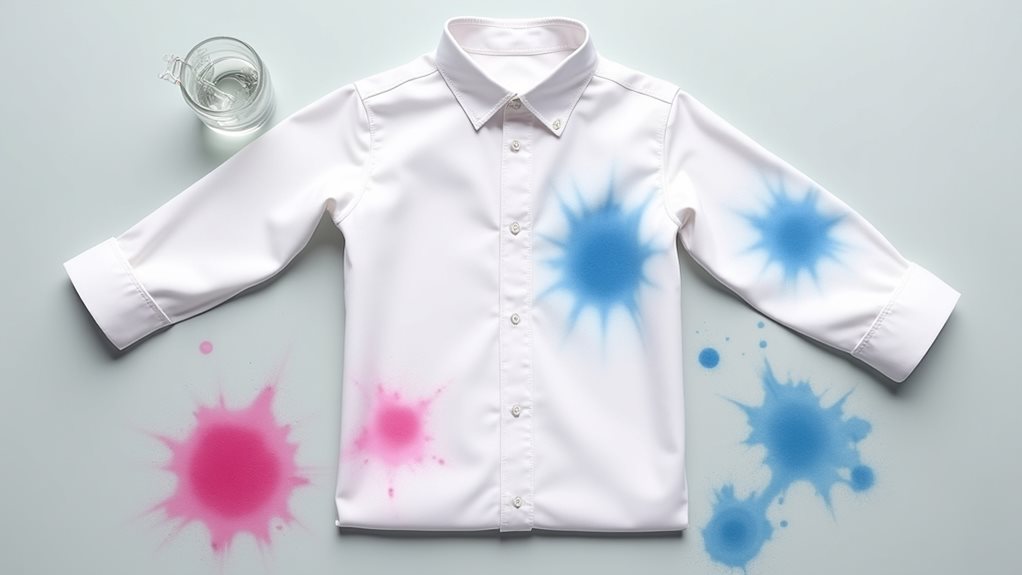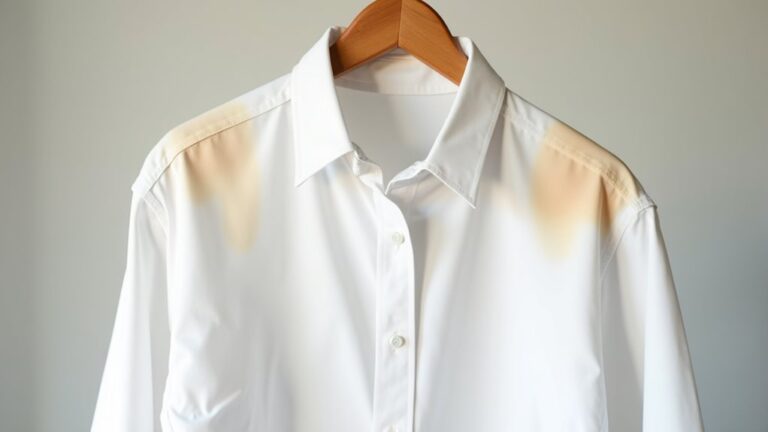Yes, dry cleaning can often remove dye transfer, especially when you act quickly and bring the stained garment to professionals who understand fabric chemistry. The specialized solvents used in dry cleaning, like perchloroethylene or modern eco-friendly alternatives, target rogue dye particles without water that could set stains permanently. Success depends on your fabric type, dye quality, and timing—synthetic fabrics respond better than delicate materials, and fresh stains yield better results than old ones that have already bonded with fibers, though understanding the complete process reveals additional strategies.
Understanding Dye Transfer and Its Causes
Since I learned the hard way that my favorite white shirt could transform into a tie-dye disaster overnight, I’ve become something of a detective when it comes to understanding dye transfer—that sneaky process where unstable dyes escape from one fabric and migrate onto another, creating those heartbreaking pink streaks on your pristine whites.
The main causes behind these unwanted stains include moisture from washing or even sweat, friction when garments rub together during laundering, and contact with colored items that haven’t been properly tested.
Even fabrics labeled as colorfast can betray you, especially when they’re new, which is why proper garment care and cleaning practices are crucial to prevent these mishaps from ruining your wardrobe.
When dye transfer does occur, professional dry cleaners can often tackle these stubborn stains using specialized solvents and pre-treatment techniques that regular home washing simply cannot match.
How Dry Cleaning Solvents Target Dye Stains
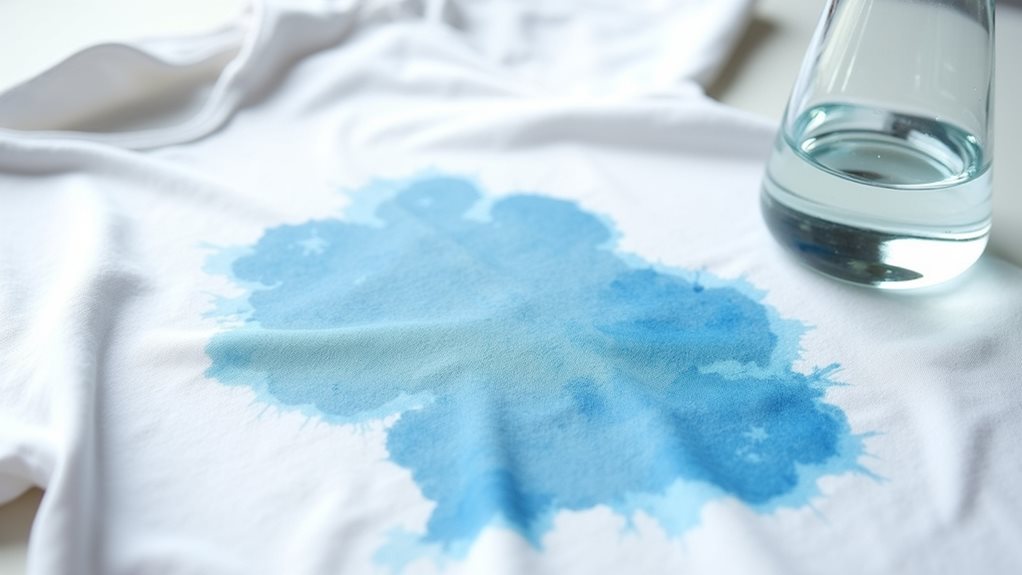
When you’re dealing with dye transfer disasters, dry cleaning solvents work like molecular matchmakers, targeting those rogue dye particles with scientific precision that’ll make you appreciate chemistry class a bit more than you probably did back in school.
Perchloroethylene penetrates deep into fabric fibers, dissolving dye stains without water that could set them permanently—think of it as your garment’s personal rescue mission.
Professional dry cleaners assess your specific dye transfer situation, selecting customized solvents for ideal results. The pre-treatment process involves specialized spotting solutions that attack stains before the main cleaning cycle begins.
Modern dry cleaning facilities are transitioning to hydrocarbon and silicone-based alternatives that offer the same dye removal effectiveness while being more environmentally responsible than traditional solvents.
Here’s the thing though: quick action makes all the difference in successful stain removal, so don’t let that stained blouse languish in your hamper!
Professional Treatment Methods for Color Bleeding
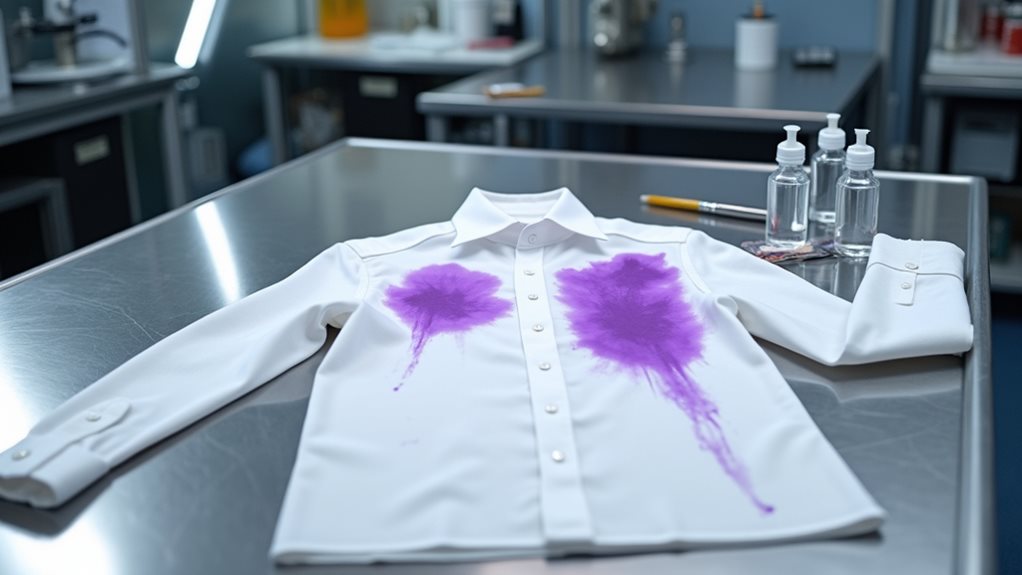
While home remedies might leave you feeling like you’re playing chemical roulette with your favorite garments, professional dry cleaners bring an arsenal of specialized treatment methods that’ll tackle color bleeding with the precision of a skilled surgeon.
These dry cleaning experts don’t just throw your stained garment into a machine and hope for the best – they carefully assess each piece, especially delicate fabrics that could be ruined by aggressive home treatments.
Their professional treatment arsenal includes powerful oxidizing agents that break down stubborn dye transfer stains during the cleaning process.
Unlike water-based washing, dry cleaning uses specialized chemical solvents that can effectively break down and remove many types of stains without damaging delicate materials like silk and wool.
Quick action is your best friend here, so don’t let that bleeding disaster sit in your closet for weeks. The sooner you get professional stain removal help, the better your chances of saving your favorite piece!
Fabric Types and Dry Cleaning Success Rates
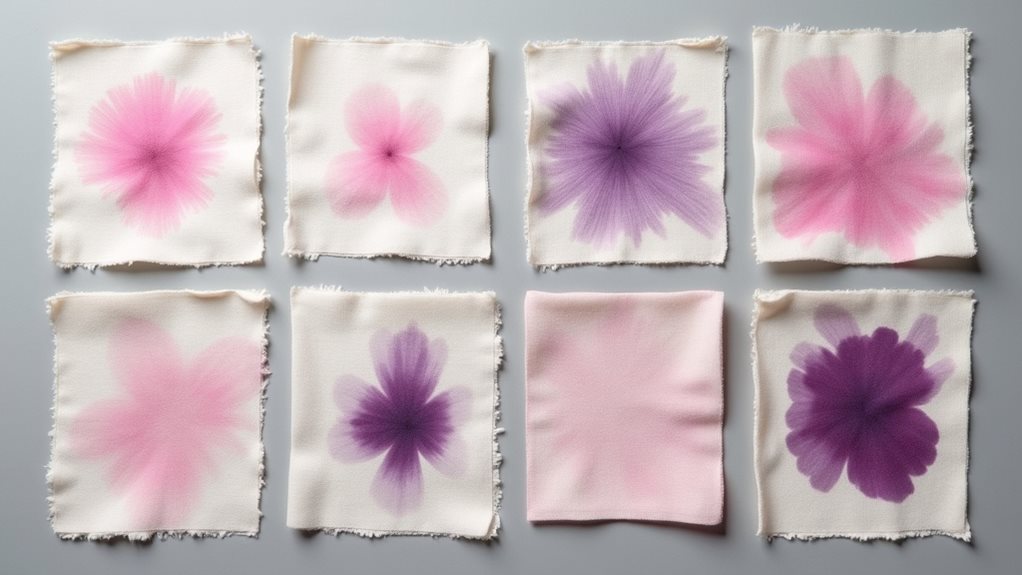
Not all fabrics are created equal when it comes to surviving the dye transfer rescue mission, and understanding which materials respond best to professional treatment can save you both heartache and money in the long run.
Synthetic fabrics like polyester and nylon are your best friends here, offering superior color retention and cooperating beautifully with professional dry cleaners’ specialized solvents.
Meanwhile, delicate fabrics such as silk and wool can be temperamental divas, requiring extra care during treatment.
High-quality dyes also play favorites, responding more favorably to cleaning attempts than their cheaper counterparts.
When choosing dry cleaning services for dye transfer removal, consider selecting establishments that use safer alternatives like hydrocarbon solvents instead of traditional perchloroethylene-based chemicals.
Timing and Its Impact on Stain Removal
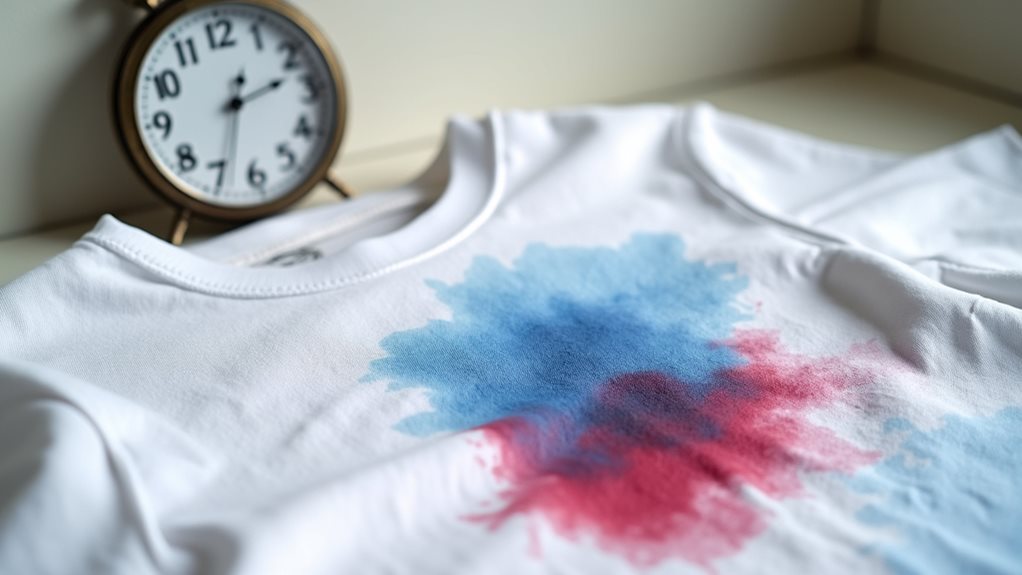
Quick, prompt action prevents dye molecules from bonding permanently with fabric fibers, while old stains become stubborn adversaries that even professional dry cleaners struggle to defeat.
Early intervention literally saves the day—I’ve learned this lesson the hard way after ignoring a purple sock incident for weeks!
When you rush to your dry cleaner immediately, they can select the best treatment method for maximum stain removal effectiveness.
The success of removing dye transfer depends on several factors including the fabric material and whether any previous cleaning attempts have set the stain permanently into the fibers.
What to Tell Your Dry Cleaner About Dye Transfer
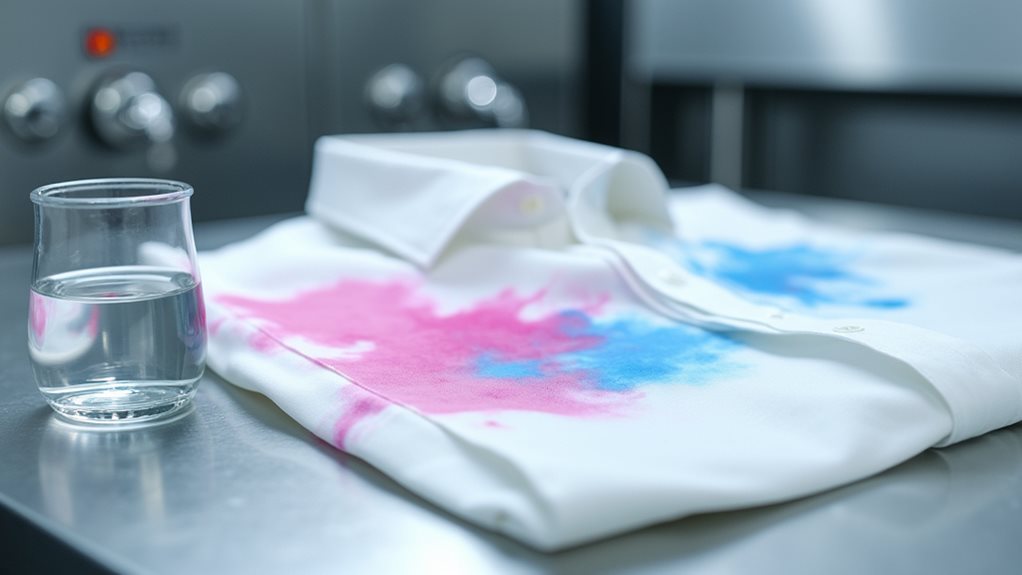
When you arrive at the dry cleaner’s counter with your dye-stained garment, becoming a detective who shares every crucial detail can mean the difference between restoration success and permanent fabric failure.
Tell the cleaner exactly what caused the dye transfer – whether it’s a red sock that snuck into whites or a new sweater that bled everywhere 😅. The colors involved matter tremendously, since some pigments require specialized handling.
Different dye colors require completely different removal techniques, so telling your cleaner the exact source of staining is absolutely critical.
Describe the extent of the dye transfer honestly; don’t downplay widespread damage hoping for cheaper treatment. Mention how long those older stains have been lurking, and check if your garment labeled “dry clean only.”
These details help dry cleaners select the appropriate treatment method and cleaning approach that’ll actually work. Additionally, inform them about the fabric type since chemical solvents react differently with various materials and may affect the success of dye transfer removal.
Prevention Strategies to Avoid Future Incidents

While knowing how to communicate with your dry cleaner can save damaged clothes, building smart laundry habits from the start will save you countless trips to their counter in the first place.
You’ll want to sort laundry by color religiously, creating separate piles for lights, darks, and those sneaky new items that love to bleed. Always wash new colored garments separately for their first few washes to identify potential bleeding before they ruin your favorites.
Don’t forget to empty pockets—trust me, that forgotten receipt can cause unexpected dye disasters!
Color catcher sheets work like magic 🪄, absorbing loose dyes during washing. Even colorfast fabrics need monitoring, so check care labels of fabrics carefully and monitor closely during initial washes to prevent dye transfer and minimize dye transfer incidents.
For garments with intricate beading or embellishments that are especially prone to dye bleeding, consider dry cleaning from the start to avoid potential transfer issues altogether.

